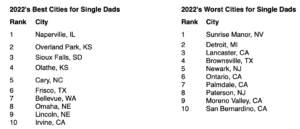
A bear scratches its back on a tree in western Douglas County (photo by Jason Clay/CPW).
DENVER – Wildlife officers from across Colorado Parks and Wildlife’s Northeast region have been and will continue to monitor bear forage availability after two winter storms in late May that could impact natural food sources.
Bears are omnivorous with their diet depending largely on what kinds of food are seasonally available. Grasses, berries, fruits, nuts and plants – native crops all dependent on moisture – dominate their diets. In years where it is very dry or we have a late frost, it can be very detrimental to the natural forage available to bears. In these years, CPW wildlife officers see a higher number of conflicts. In years where there is good moisture and the food mast is readily available and abundant, interactions and conflicts with bears tend to be lower.
Reported conflicts with bears were down 28 percent in 2021 compared to the two previous years, but that is not expected to be the same this year. Wildlife officers have concerns the late freeze events in May could limit food sources for bears and they will be looking elsewhere for the calories they need. The last such scenario took place in 2017 – a potent late-season winter storm from May 17-19 hit Colorado with subfreezing temperatures that hindered early-blooming vegetation. It led to a high-conflict year with bears where CPW relocated 109 bruins and euthanized another 190.
“We certainly see a correlation between annual failures of natural bear food sources and years with higher human-bear conflict rates,” said Mark Vieira, Carnivore and Furbearer Program Manager for CPW. “When natural food sources are scarce, as the smart flexible eaters that bears are, they tend to spend more time near humans. Our communities tend to be closer to riparian systems that offer a wetter environment of natural foods, in addition to the offerings of human food sources that exist when we don’t properly secure our trash and other attractants.
“While portions of the northern Front Range may have gotten a brief respite with rains pulling them out of the worst of the current statewide drought, natural bear foods like hard and soft mast also need good summer moisture to produce the most fruit. Current snowpack and moisture conditions in most of the state are far from optimal for robust fruit production.”
Mountainous and foothill areas from western Douglas County all the way up north through western Larimer County have already seen some areas with frost damage to emerging crops. Up in western Larimer County, effects from the 2020 Cameron Peak Fire are still impacting forage.
“We have such a large fire footprint that the damage is already done as far as worrying about the soft mass production,” said Wildlife Officer Shane Craig, who covers the north Poudre Canyon district. “I’m sure there were pockets of natural forage that survived, but we have already skated on our luck to get us past 2021.”
Across the region, the various food crops on the land vary from acorns produced by gambel oak south of I-70 to a mixture of berries and fruits that dominate the crops north of I-70 from Golden straight up to the Wyoming border.
In the summer and early fall, bears take advantage of a variety of berries and other fruits. In the fall, the time known as hyperphagia when bears will be looking to consume 20,000 calories daily, preferences are for foods high in fat, sugar and starch. Bears take advantage of the acorns and berries where available.
Once the berries are picked through after ripening in late summer and early fall, ripening acorns become a vital food source during that hyperphagia stage. The habitat in western Douglas County is an area chock-full of gambel oak. Wildlife officers there have been out surveying the oak crops following the winter storms in May.
Temperatures of 28 degrees or lower for five or more hours can kill off flowering and emerging crops. In western Douglas County they were finding that nearly all emerging gamble oak crops had died off from the freeze above 6,800 feet in elevation, but that the chokecherries and plums had survived.
“We’ll be okay for a short time, but in the 7-8 years I’ve been in my district I’ve never seen an oak dieoff like this,” said Wildlife Officer Melanie Kaknes. “The bears will have to figure something out because they have to put weight on for the winter. This dieoff is going to be pushing bears down in elevation and likely into town.”
Over in western Jefferson County and eastern Park County, wildlife officers have concerns over the status of higher elevation crops.
“I took a look at the chokecherry bushes I have in my lower areas and it was looking rather good,” said Wildlife Officer Dawson Swanson, speaking of the greater surrounding area of Bailey all the way northwest to the Continental Divide. “It is too early for me to know how things will pan out for the higher elevation stuff. On the good side we are getting some moisture that we desperately need, let’s just hope things did not freeze up high.”
Again, it is particularly the acorn mast wildlife officers are concerned about at this stage in the region.
“I looked around this week and the currant and chokecherry is in bloom so I think we are good there,” said Wildlife Officer Scott Murdoch, who covers the Conifer district. “Off high grade roads, we had lots of frost-killed oak. Lower down in Deer Creek Canyon, things look better.”
Looking north and into Boulder County, the habitat there is supported by chokecherry, raspberry, rose hips and other fruit crops.
“I am concerned that the freeze will affect the fruit crop,” said Wildlife Officer Joe Padia. “Drought followed by missing fall forage could make for an extended conflict season.”
“As for impacts from the freeze, it is certainly something we will keep an eye on as the summer progresses and the chokecherries and rose hips, in particular, become a more important food source,” added Wildlife Officer Sam Peterson.
Back to the country in Larimer County already scarred from the Cameron Peak Fire two years ago, Wildlife Officers there are gearing up for a bad human-bear conflict year.
“We had such a large area of consistent problems in 2020 with so many bears that we were simply putting band-aids on everything, trying to keep them out of trouble,” Wildlife Officer Shane Craig said. “We thought 2021 was going to be the pay up year, but it really wasn’t.”
A benefit of fire is that it can lead to a rejuvenation of the vegetation, depending on how hot the fire burns.
“In areas such as creek and stream bottoms and wet spring areas within the Cameron Peak burn scar, I saw the first stages of growth in forbs and grasses,” said Wildlife Officer Justin Foster. “In 2021 there was some regrowth in the burned aspen and willow areas, but that regrowth was very minimal. The chokecherry, raspberry, currants and plums had very little regrowth in 2021.
“The fire definitely burned a lot of food crops for our bears, but last year I did see pockets that were not burned and hopefully they will produce this year. These areas are located at higher elevations, so my hope is they have not bloomed and the freeze didn’t affect them.”
However, Foster does have concerns of lost emerging crops because of the freeze.
“I know most of the plums had already bloomed before the cold weather, so I hope they didn’t freeze and we had good pollination. The chokecherries were in full bloom in the lower foothill elevations, so we may have lost some production in those areas.”
He said one area that was doing very well was in the High Park Fire burn scar, where regrowth is looking great.
“I was in contact with hunters in the early fall who saw multiple different bears feeding in large raspberry and chokecherry patches at higher elevations on the National Forest,” Foster said. “Hopefully those areas had not bloomed and were not affected by the late cold weather. In the lower elevations of the fire and on the private property it is hit or miss; a lot of berries were blooming and some had not.”
In the region of Livermore to Red Feather Lakes, Wildlife Officer Brock McArdle said that effects from the late freeze remain to be seen.
“We probably will have some impacts on food sources from the freeze, but I don’t think it will be a complete food failure here,” McArdle said. “There have been some impacts lower around 6,000-7,000 feet – the plums were in bloom when the freeze came and there are no plums forming now, but the chokecherries bloomed after the freeze so they are okay. Higher up, my thought is the freeze came in early before the flowers bloomed so crops there may be okay, but it remains to be seen.”
Most adult bears will survive year-to-year, even despite poor food availability, so they don’t need help from people even in bad years. Individuals need to take responsibility and follow proper guidelines on living appropriately with bears. A concentrated effort needs to be made this summer and fall to remove attractants available to bears so we do not experience increased conflicts.
To learn more about living with bears, please visit the Colorado Parks and Wildlife website that has a number of educational resources available. Or call us, by contacting your local CPW office.
Photos Below (Courtesy of CPW):
1: A wildlife officer holds up a plum branch (left) and chokecherry (right) with fruit forming, unaffected by the May freeze events. Picture taken in northwest Douglas County at 5,510 feet.
2: Blooming chokecherry flowers at 7,000 feet in western Douglas County.
3: Frost-killed gambel oak in western Jefferson County.
4: Picture of gambel oak which had already flowered and then died off from the May freeze events. Taken in western Jefferson County near Conifer.

















